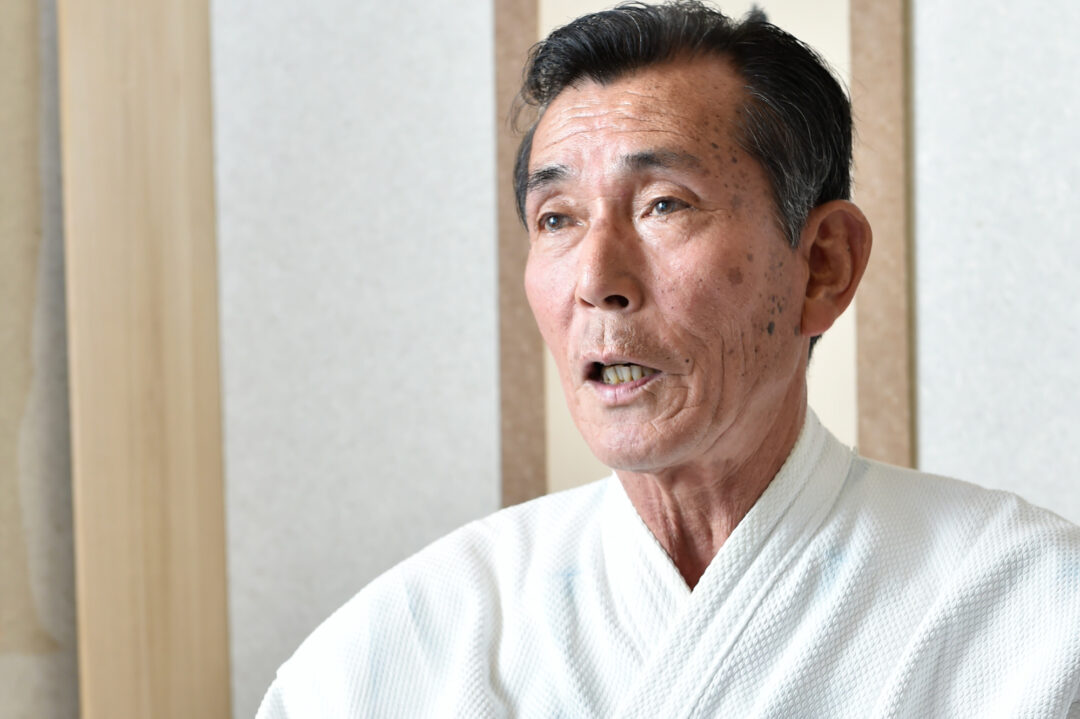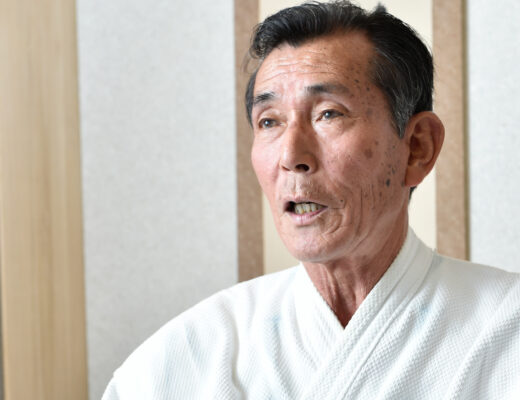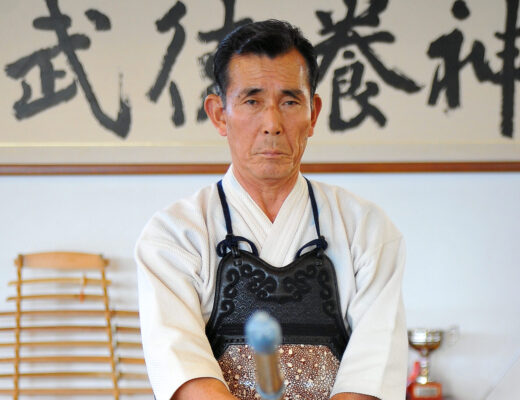In Kendo, it is important to apply Seme and disrupt, but no matter how much you do so, it is meaningless if it does not lead to an all-in technique. In this article, you will learn the process of disrupting your opponent to attain an Ippon, through detailed explanation by Sumi Masatake.
Sumi Masatake, 8th Dan Hanshi
Sumi Masatake was born in Fukuoka Prefecture in 1943. After graduation, he worked as a high school teacher before returning to his alma mater, as an assistant professor. From 1999 to 2002, he served as a permanent director of the All Japan Kendo Federation. Placed third in the 23rd Meiji-mura Kendo Tournament. He was the ladies’ coach of the Japanese national team at the 11th World Kendo Championships. Currently a professor emeritus at Fukuoka University of Education and the head of its Kendo club.
Sutemi (going all-in, striking with abandon) involves four processes: preparing, confronting, disrupting and going all-in.
I would like to talk about “Sutemi”.
What do you consider to be Sutemi? I think most of you probably think of Sutemi as the moment when you perform a technique. However, if you consider the process of performing a technique, that won’t appropriately cover it. I believe that the Seme and disruption before that moment is where the mindset for Sutemi must be found.
Let’s break it down a bit. When attacking an opponent, the Maai between you and your opponent will naturally get shorter. At this point, if you aren’t convincing, your Seme will not affect your opponent. It is because you are attacking with abandon that you will be able to agitate your opponent.
When I watch student Kendo nowadays, it seems as if they are using quick movements to disrupt the opponent, but I don’t see any abandon in that, any readiness to risk everything with disregard of getting struck. Most of them are attacking with the mindset that they can defend anytime when their opponent strikes. The most obvious manifestation of this is the defensive posture of raising the hands.
If you raise your hands when shortening the Maai, your opponent will not like it if you have momentum, so in that sense the Seme is effective. However, since you are attacking with a passive attitude, it will not lead to Sutemi, and your techniques will not be as sharp. I believe that the real appeal of Kendo lies in the fact that both parties use techniques with the mindset of Sutemi. I think it is important to put yourself on the line when you apply Seme and disrupt your opponent.
The mind and the body
So, why is it valued to strike with abandon? There is a clear reason for this. By striking this way, the three elements of mind, body and sword come into play. These three elements are essential for valid strikes.
The beauty of striking with abandon is that the momentum gives you a beautiful, powerful appearance and a brilliant strike. And this momentum will upset the opponent. No matter how many wonderful strikes you make, if your opponent does not make the slightest movement, you are like a summer insect that flies into the fire. In Kendo, it has long been said that you should strike where your opponent moves. If the opponent does not move, you must not strike him. If he does not move, you must make him move and strike him.
The reason why we are unable to take advantage of our opponent’s agitation of mind and posture is because we are not able to abandon ourselves in the preliminary stage. In this case, the Seme is applied only in form without the mindset of a relaxed upper body and strong lower body. This way, the momentum of mind, body and sword will not emerge.
Another thing that is inextricably linked to Sutemi is Zanshin. It, as the name implies (“Zanshin” is written with the characters for “remaining” and “mind”), is sometimes explained as the mind that remains, but that is insufficient. Zanshin is not about a remaining mind, but rather about giving everything you have.
When you put your whole body and mind into it, you will naturally be ready for the next exchange, which is Zanshin. A half-hearted posture and strike that merely attempts to touch will only lead to a half hearted follow up. By striking with all your energy and hips, you will not lose your Kamae and will be able to respond to whatever happens next. That is why in Zanshin, emphasis is put on the mind.
In order to make sure that the mind is working properly, breathing exercises are very important. With Zanshin, it is very important to fully exhale and to sustain the spirit, which is key for correct posture and a good relaxation of the hands. This spirit lies at the center of Zanshin, which is enriched by Kiai and proper breathing. A common definition of Zanshin is “The posture and mindset that keeps you alert after a strike”. When it comes to which is first, the mind must be alert for the body to be prepared.
Zanshin cannot occur if the Kiai has no sustained exhalation. The more sustained the Kiai, the stronger the attack, the more accurate the strike, and the better the preparation for the next exchange. So what is preparedness for the next exchange? I think it can be expressed by the ability to respond. The word “preparedness” gives the impression of waiting patiently, but this is not the case. What is important is the continuation of the spirit, the stability of the posture, and the freedom of the Shinai, which is the ability to respond to the follow-up phase. This is exactly the same as the aforementioned spirit, body, and sword. In order to strike in the heat of the moment, you have to put everything you have into the preliminary stage. In this way, the continuation of spirit will naturally be created.
The rest of this article is only available for Kendo Jidai International subscribers!




